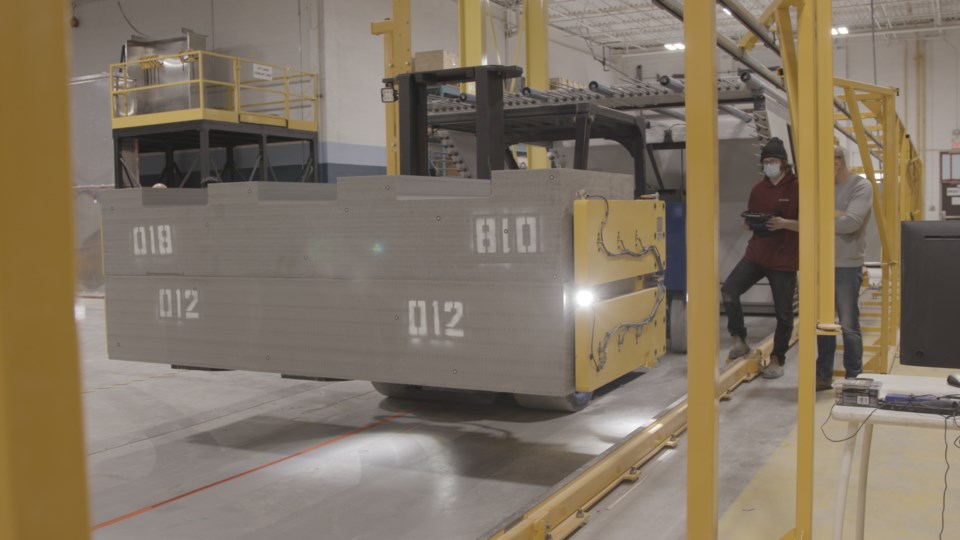OAKVILLE – When it comes to safely disposing of used nuclear fuel, the Nuclear Waste Management Organization has been doing their due diligence in ensuring that the public is informed about all safety precautions they are taking before the official deep geological repository is built.
One such precaution is a simulation test of the transportation equipment which might be used to move used nuclear fuel containers inside a life-sized model of the repository’s underground storage rooms.
The life-sized model was built by NWMO’s technical team to scale with simulated rock tiling.
Over several days, NWMO conducted several tests using a customized forklift designed to move used nuclear-used fuel containers into the storage rooms and then proceeded to fill the remaining space with Bentonite clay.
Bentonite clay is the protective material that will surround the containers to ensure that the containers retain their strength and durability for the next hundred thousand years.
Additionally, the clay barrier adds an extra level of protection against corrosion or degradation between the container and any microbial growth that may infiltrate the repository.
After the containers are placed, all the remaining space from floor to ceiling was filled with loose granular bentonite.
After the demonstration was completed, the room was methodically emptied to carefully evaluate the installation of the engineered barrier system.
“All elements of the demonstration performed as expected and according to plan,” said Chris Boyle, vice-president and chief engineer at the NWMO. “The demonstration shows not only the NWMO’s ability to install the engineered-barrier system but also the calibre of our technical teams, who are invested in the project’s success and committed to doing what’s right for Canadians and Indigenous peoples.”
The reason why this demonstration was important is because of the eight-plus years of designing, preparation, and construction of the heavy machinery by the NWMO’s team of leading technical specialists and engineering partners that will be used to safely store the used nuclear waste containers in the deep geological repository.
However, this isn’t to say that NWMO’s work is finished.
The equipment is still in the prototype stage and will need some more rigorous testing before the equipment can be put into service.
Nevertheless, the testing of the equipment shows where additional modification needs to be made to ensure that the final product is up to safety standards.
“Our successful demonstration was the result of made-in-Canada innovation and collaboration,” added Boyle. “Every step of the process was undertaken using sophisticated prototype equipment that was designed and fabricated in partnership with Canadian engineering companies.”
Altogether, each used fuel container and the Bentonite barrier weighs 8,000 kilograms.
Therefore, the specialized equipment must be able to lift the containers effectively, leaving no possibility of shifting their contents during transportation and placement in the storage rooms.
In-depth analysis is now underway to assess the results and yield insights that will support the ongoing design and planning of the deep geological repository.
Nuclear energy has powered Canadian communities for decades, and the planned underground repository is part of Canada’s plan to safely manage the resulting used nuclear fuel over the long term.
Today, there is international scientific consensus that deep geological repositories are the best solution to protect people and the environment for generations to come.
